- About MAA
- Membership
- MAA Publications
- Periodicals
- Blogs
- MAA Book Series
- MAA Press (an imprint of the AMS)
- MAA Notes
- MAA Reviews
- Mathematical Communication
- Information for Libraries
- Author Resources
- Advertise with MAA
- Meetings
- Competitions
- Programs
- Communities
- MAA Sections
- SIGMAA
- MAA Connect
- Students
- MAA Awards
- Awards Booklets
- Writing Awards
- Teaching Awards
- Service Awards
- Research Awards
- Lecture Awards
- Putnam Competition Individual and Team Winners
- D. E. Shaw Group AMC 8 Awards & Certificates
- Maryam Mirzakhani AMC 10 A Awards & Certificates
- Two Sigma AMC 10 B Awards & Certificates
- Jane Street AMC 12 A Awards & Certificates
- Akamai AMC 12 B Awards & Certificates
- High School Teachers
- News
You are here
Who's That Mathematician? Paul R. Halmos Collection - Page 53
For more information about Paul R. Halmos (1916-2006) and about the Paul R. Halmos Photograph Collection, please see the introduction to this article on page 1. A new page featuring six photographs will be posted at the start of each week during 2012 and early 2013.
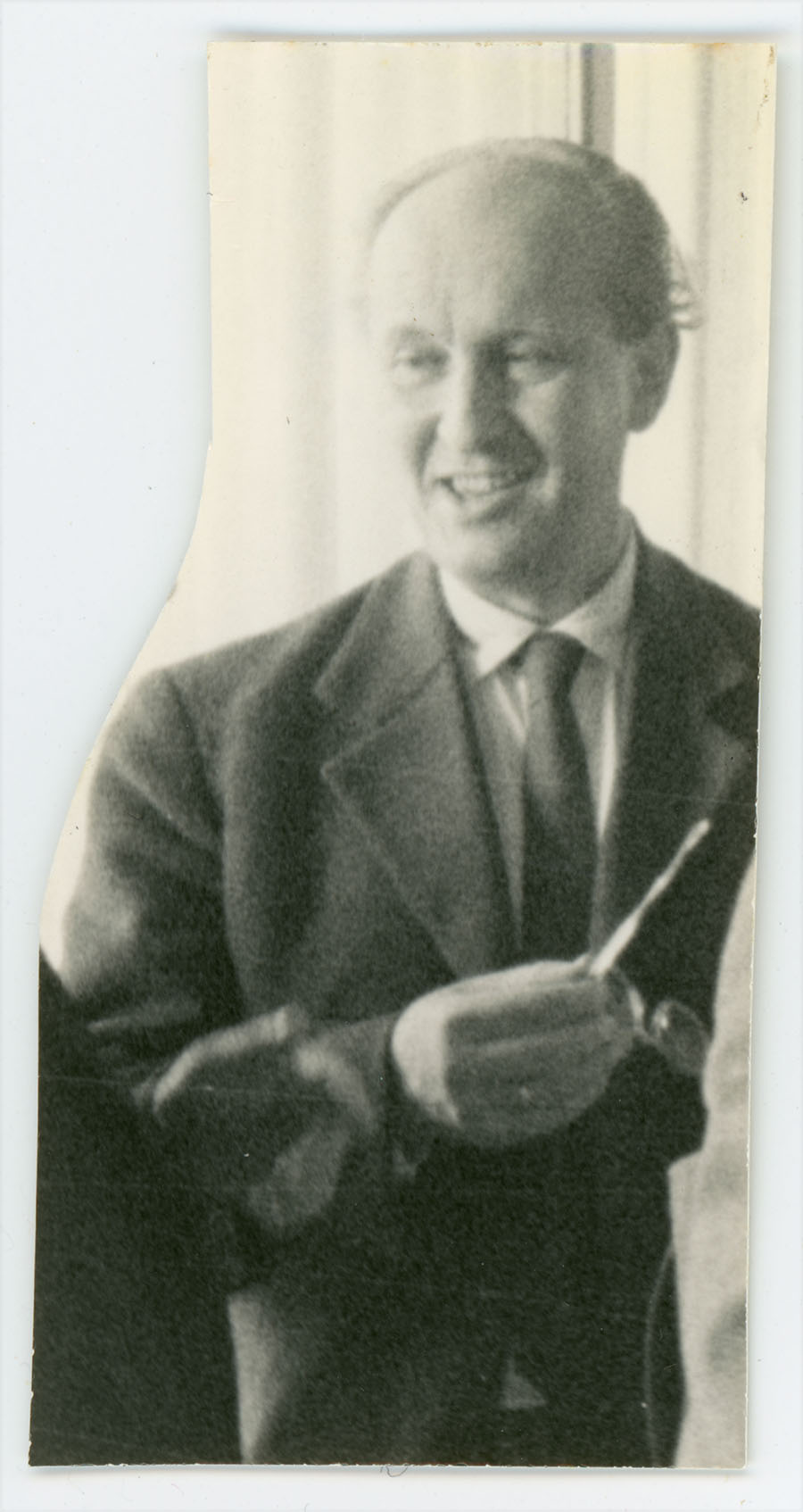
Halmos photographed Pál Turán (1910-1976) in 1963 in Berkeley, California. Turán earned his Ph.D. from the University of Budapest in 1934 with the dissertation “On the number of prime divisors of integers,” written under advisor Lipót Fejér. His first three papers included his first joint paper with Paul Erdős, who also earned his Ph.D. from the University of Budapest in 1934, and a paper featuring a new proof of a theorem of Hardy and Ramanujan. Both of these papers were published in 1934, and a string of important papers in various international journals followed. In 1938, Turán invented his famous power sum method in analytic number theory, which would also influence many other areas of mathematics. Turán spent most of 1940 to 1944 in forced labor camps, where he further developed his power sum method and invented extremal graph theory. In 1945-46 he joined the faculty at the University of Budapest, becoming Chair of Algebra and Number Theory in 1949. In 1948 he was elected to the Hungarian Academy of Sciences and from 1955 onward was Head of the Complex Function Theory Department in the Academy’s Mathematical Institute. (Source: MacTutor Archive)
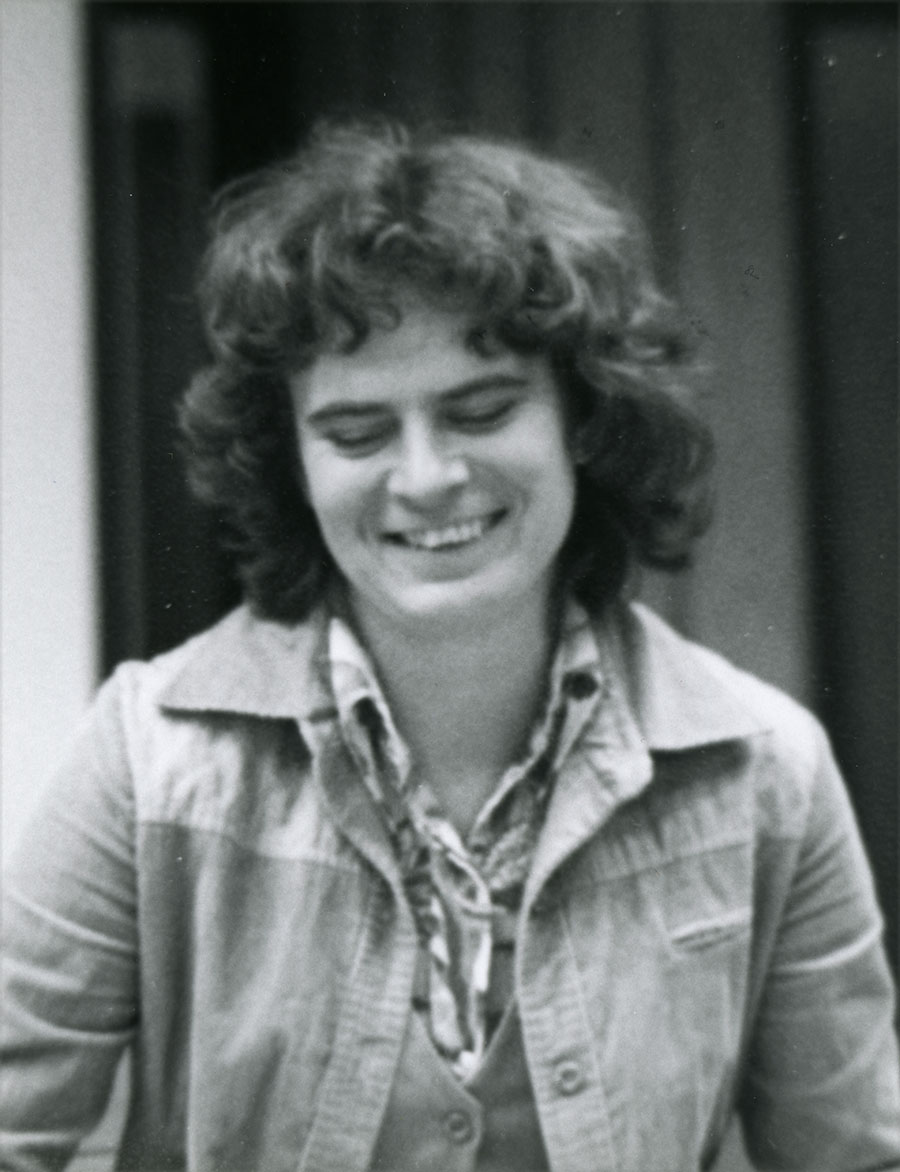
Karen Uhlenbeck was photographed by Halmos in 1978. At the time, Halmos was at Indiana University and Uhlenbeck at the University of Illinois at Chicago Circle (which became the University of Illinois at Chicago in 1982), and this photograph may well have been taken at the same UICC colloquium at which Halmos also photographed UICC faculty members Louise Hay (see page 21 of this collection) and William Howard (see page 25). Uhlenbeck earned her Ph.D. from Brandeis University in 1968 with the dissertation “The Calculus of Variations and Global Analysis,” written under advisor Richard Palais. After one year (1968-69) at MIT, two years at the University of California, Berkeley (1969-71), and five years at the University of Illinois at Urbana-Champaign (1971-76), she was a professor at UICC from 1976 to 1983. There, she did work on partial differential equations that provided analytic tools that would become immediately useful in the geometric work for which Simon Donaldson (pictured on page 12 of this collection, where you can read more about him) was awarded the Fields Medal in 1986, and presumably led to her own MacArthur Fellowship (“genius grant”) in 1983. In 1983, she moved to the University of Chicago and in 1988 she moved again, to the University of Texas at Austin, where she remains Sid W. Richardson Regents Chair in Mathematics and lists her interests as non-linear analysis, gauge theory, and integrable systems. (Sources: MacTutor Archive, Mathematics Genealogy Project, University of Texas Mathematics)
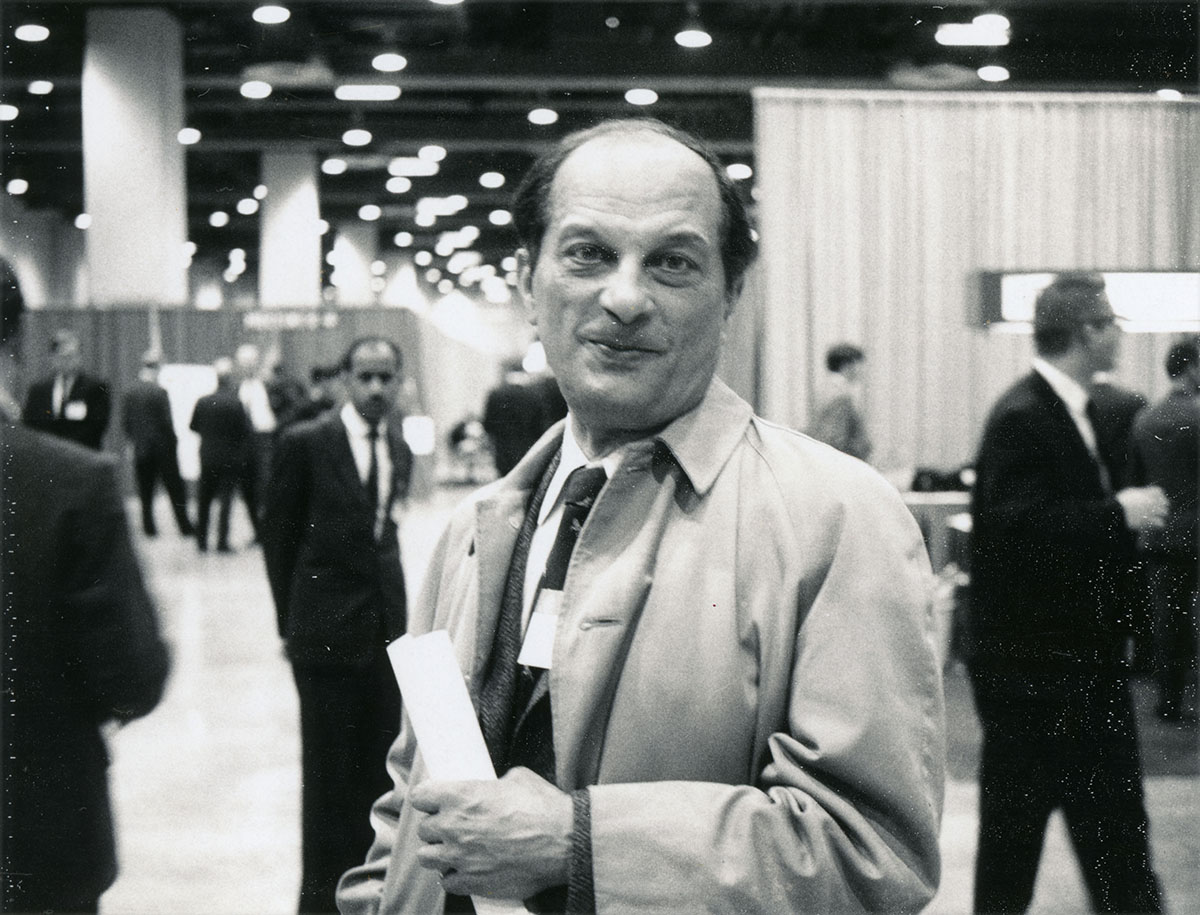
Halmos photographed Stanislaw Ulam (1909-1984) on January 23, 1970, at the Joint Mathematics Meetings in San Antonio, Texas. Although Ulam may be best known for figuring out how to initiate fusion in the hydrogen bomb, mathematicians probably prefer to remember him as the inventor of the “Monte-Carlo method” of statistical sampling. Ulam earned his Ph.D. in 1933 from the Polytechnic Institute in Lvov, Poland (now Ukraine) with a dissertation written under advisors Kazimierz Kuratowski (pictured on page 29 of this collection, where you can read more about him) and Wlodzimierz Stozek, but probably more closely advised by Stefan Banach since it generalized a result of Banach’s. In 1935, he traveled to the U.S. to work with John von Neumann (for a photo and more information, see page 52 of this collection) at the Institute for Advanced Study in Princeton, New Jersey, and soon accepted a position at Harvard University in Cambridge, Massachusetts. In 1940, he moved to the University of Wisconsin and, in 1943, he began working on the hydrogen bomb in Los Alamos, New Mexico. He remained at the Los Alamos National Laboratory until 1965, when he moved to the University of Colorado at Boulder. (Sources: MacTutor Archive, Mathematics Genealogy Project)
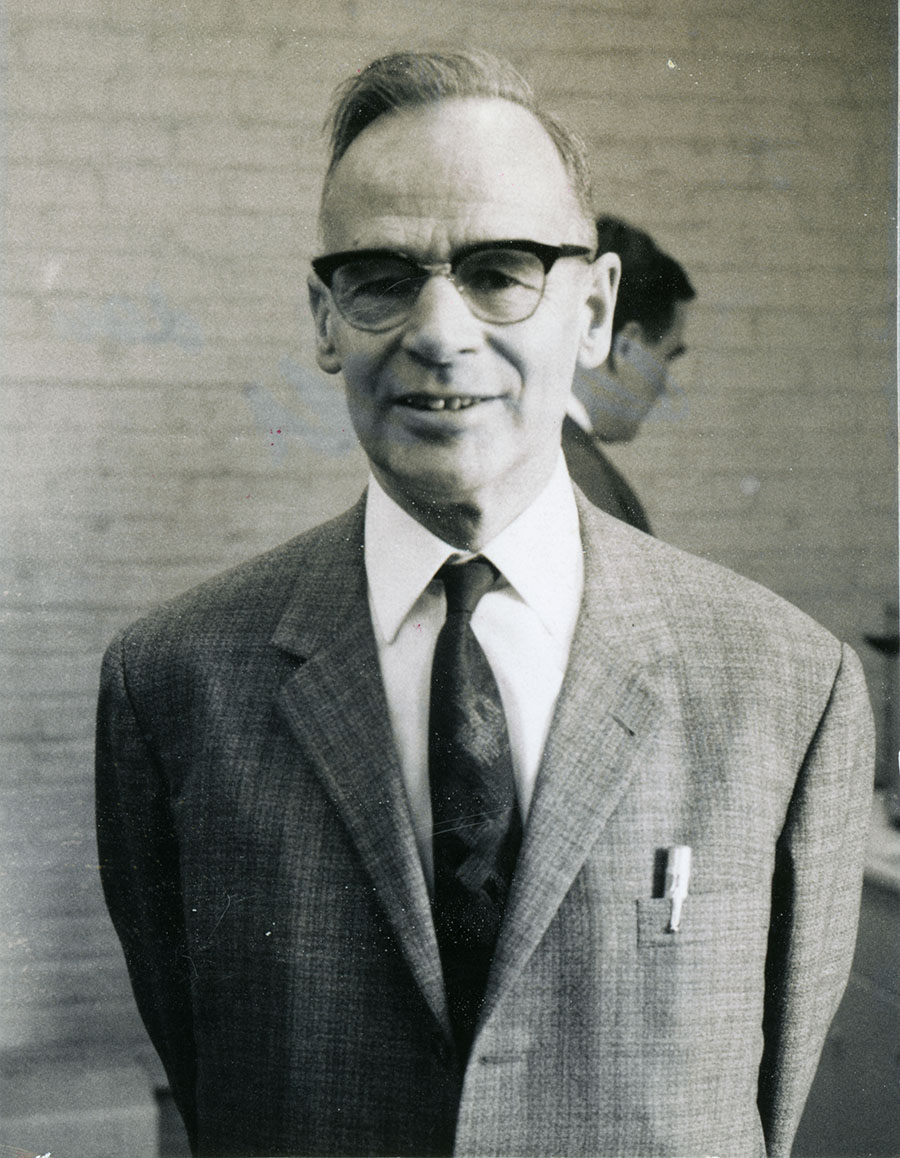
Bartel Leendert van der Waerden (1903-1996) was photographed by Halmos on April 2, 1968, in Ann Arbor, Michigan. Another photograph of van der Waerden from the same occasion appears on page 23 of this collection, where you can read more about him. Halmos was a faculty member at the University of Michigan from 1961 to 1968.
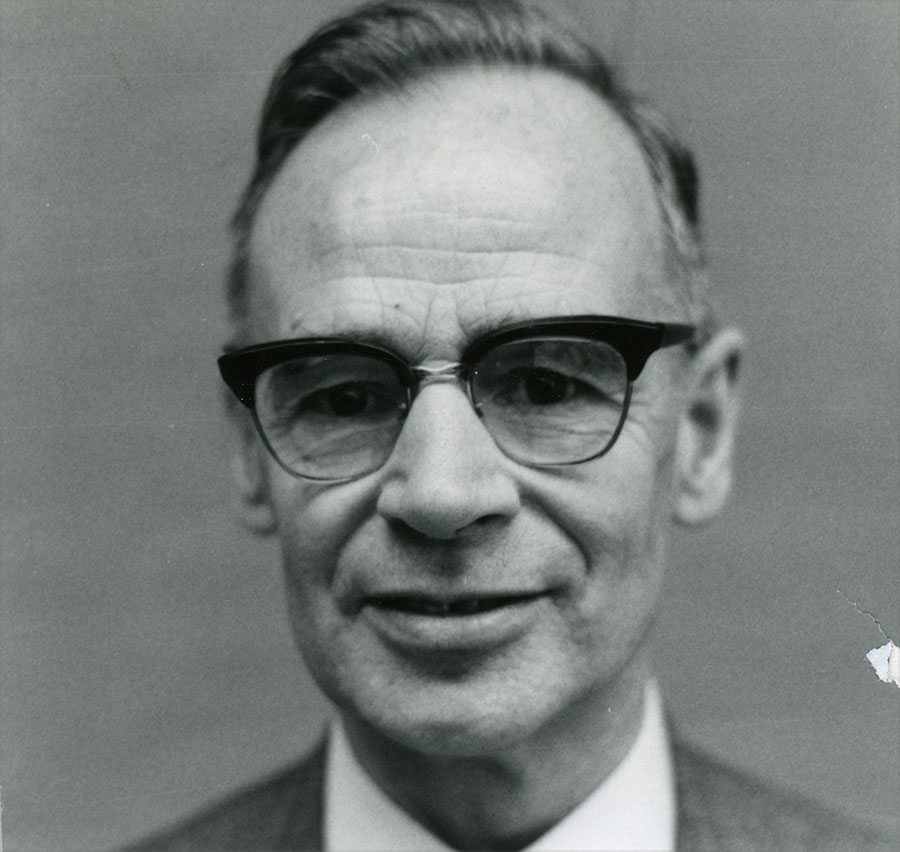
Bartel Leendert van der Waerden (1903-1996) was photographed again by Halmos on April 2, 1968, in Ann Arbor, Michigan. Other photographs of van der Waerden from the same occasion appear above and on page 23 of this collection, where you can read more about him.
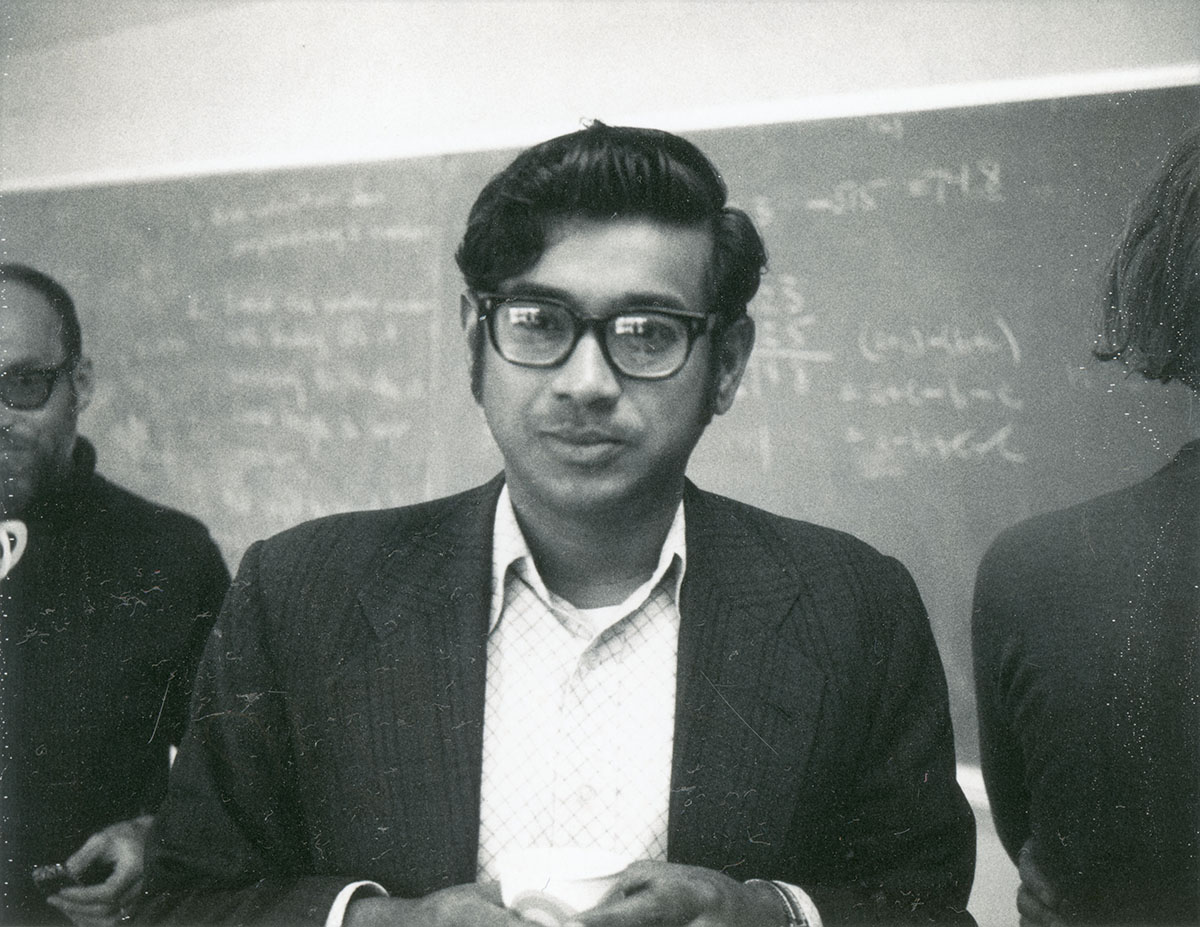
Halmos photographed the probabilist and 2007 Abel Prize winner Srinivasa (S.R.S.) Varadhan on February 24, 1977, in Santa Barbara, California. Halmos was on the faculty at the University of California, Santa Barbara, from 1975 to 1977. Raghu Varadhan earned his Ph.D. in 1963 from the Indian Statistical Institute in Kolkata (then Calcutta) with the dissertation “Convolution Properties of Distributions on Topological Groups.” One of his thesis examiners was Andrei Kolmogorov (pictured on page 28 of this collection, where you can read more about him), who reported, “This is not the work of a student, but of a mature master” (quoted in O’Connor’s and Robertson’s MacTutor biography). Varadhan immediately accepted a postdoc at the Courant Institute of Mathematical Sciences at New York University, where he remains Professor of Mathematics and Frank J. Gould Professor of Science, specializing in probability, stochastic processes, and partial differential equations. His best known work probably is his martingale characterization of diffusion processes and his theory of large deviations for Markov processes. (Sources: MacTutor Archive, Abel Prize, NYU Mathematics)
For an introduction to this article and to the Paul R. Halmos Photograph Collection, please see page 1. Watch for a new page featuring six new photographs each week during 2012.
Regarding sources for this page: Information for which a source is not given either appeared on the reverse side of the photograph or was obtained from various sources during 2011-12 by archivist Carol Mead of the Archives of American Mathematics, Dolph Briscoe Center for American History, University of Texas, Austin.
Janet Beery (University of Redlands) and Carol Mead (Archives of American Mathematics, University of Texas, Austin), "Who's That Mathematician? Paul R. Halmos Collection - Page 53," Convergence (June 2013), DOI:10.4169/loci003801




